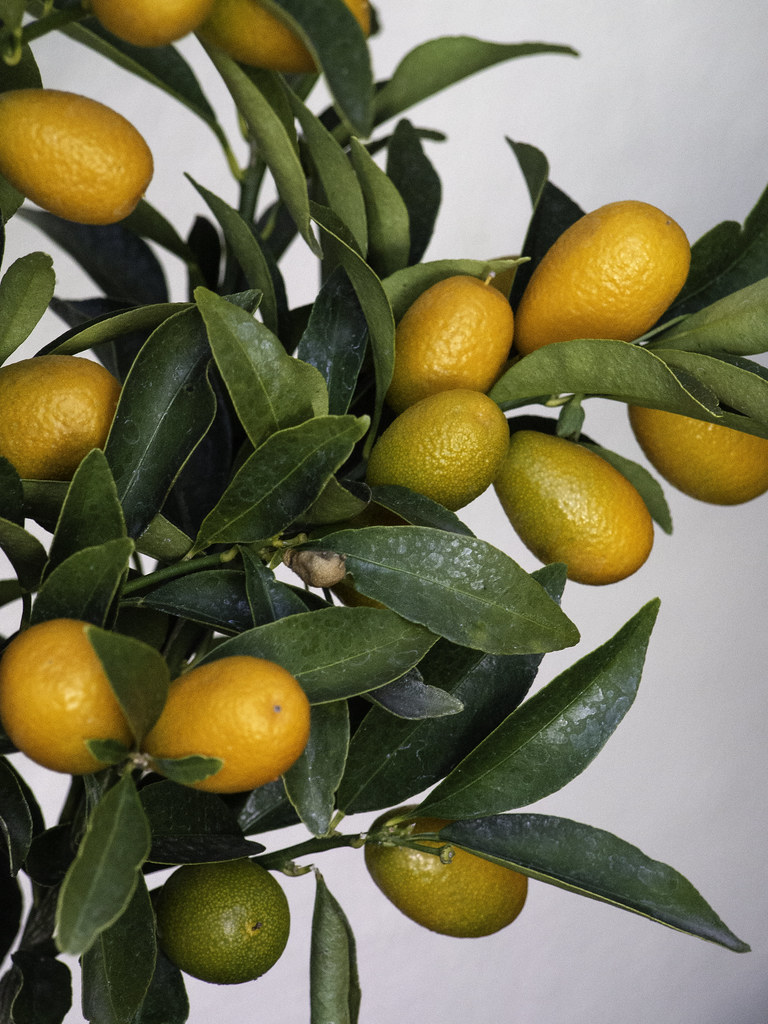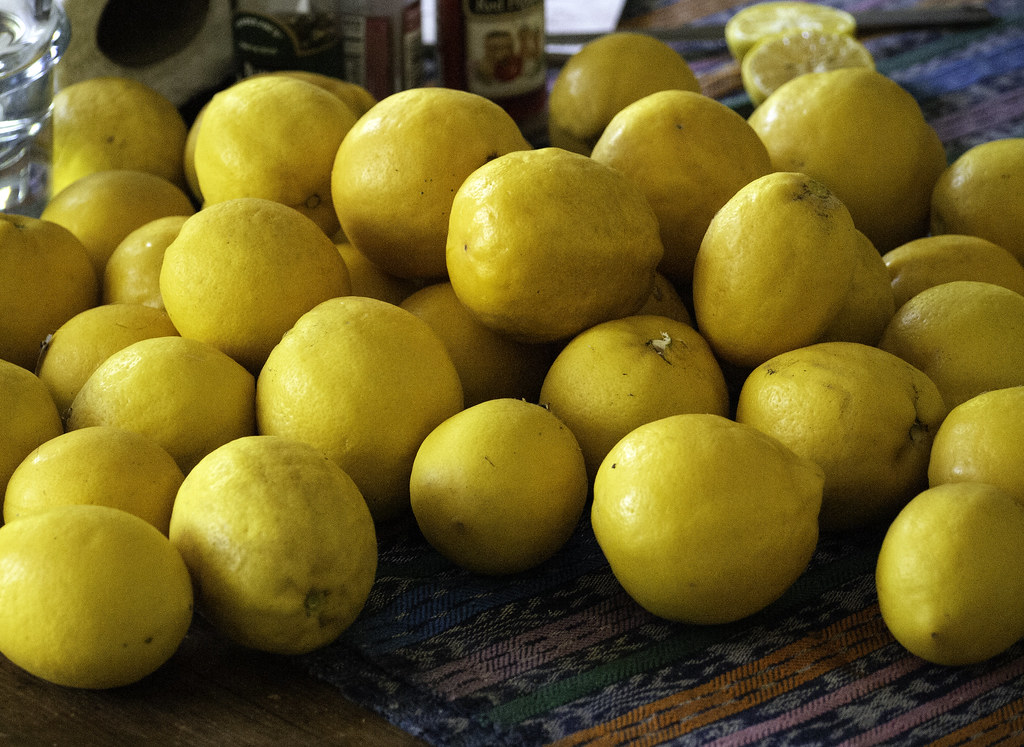
One pleasure of gardening in the San Francisco Bay Area is the ability to grow citrus. While we don’t get the heat that produces the bountiful harvests of Southern California groves, we do have mild enough winters that we can grow many types of citrus and get a decent harvest from them (where I am anyway, maybe not in the sun- and heat-starved city). And citrus trees usually do well in containers, which provides great flexibility.
The latest addition is a Eustis Limequat (Citrofortunella japonica, I guess, though there seems to be a lack of consensus about the plant’s botanical name). As the plant’s common name suggests, this is a hybrid of kumquat and lime, specifically Key (Mexican) lime. It typically grows to about six to eight feet. The hybrid was created by Walter Swingle in Florida in 1909, and Florida remains the main area of its popularity. But the tree should be grown more widely, because from its kumquat parent it inherits greater cold tolerance that most limes. According to Gardening Know How, “It can usually survive temperatures as low as 22 F. (-6 C.), and it can sometimes survive as cold as 10 F. (-12 C.).”
The limequat also inherits the kumquat’s edible peel, though I think it is usually grown for its pulp, which is similar to that of limes. The pulp contains seeds, which are also edible but sometimes removed because they are somewhat bitter. It is acidic, with high quantities of vitamin C. Florida Fruit Geek says that “The edible peel makes this a great one for a lime-flavored marmalade. People who like sour flavors eat whole limequats, peel and all.”
One use of the pulp is in making limequat pies, substituting the fruit for the Key limes in Key lime pie recipes. (I have a Key lime that does pretty well, but that is because I have it up against a south-facing wall—in general the Bearss limes are more cold hardy.) So if you have a taste for key lime pie but live in a cooler climate than Florida, limequats might be something to try.

Limequats also fruit abundantly, similar to kumquats. And they produce fruit pretty much year round. According to Florida Fruit Geek, “One grower I know in the Gainesville, Florida area harvests over a gallon of fruit every week from each of his ‘Lakeland’ limequat trees for many months of the year.”
The three kinds of limequats are Eustis, Lakeland, and Tavares, each named after the Florida cities where they were developed. Eustis, the variety I have, is the most common. Lakeland fruits are a little larger. Tavares are more orangelike in both color and flavor.

Links
- Limequat at Wikipedia
- Limequat at Specialty Produce
- Eustis limequat at Four Winds Growers
- Growing limequats at Gardening Know How
- Limequats at Florida Fruit Geek
- Eustis limequat at UC-Riverside

My citrus
(This is really just an inventory for myself, because I have enough now to forget one of two.)
- Limequat
- Kumquat
- Key Lime
- Bearss (Persian) Lime
- Rangpur Lime
- Eureka Lemon
- Eureka Variegated Lemon
- Meyers Lemon Improved
- Satsuma (my favorite)
- Acidless Blood Orange
- Mexican Sour Orange